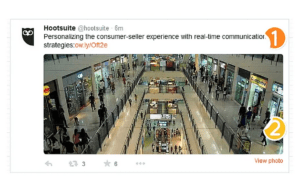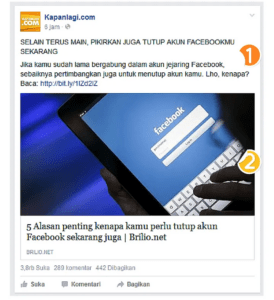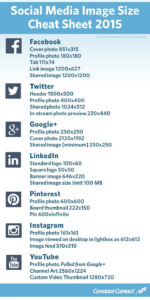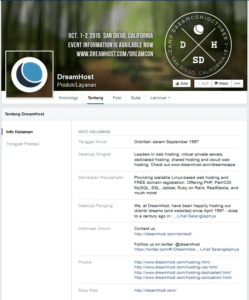How many of your blog posts have been shared on social media?
What effect does it have on your blog?
Are there more readers?
Just average?
or…
Does it get busier but only with your friends?
Sharing posts on social media aims to increase visitors, right?
Whether it’s through Facebook, Twitter, or even Google plus. All your content is out there.
Again, what’s the result? How many visitors to your blog? Is it increasing?
You may have joined groups, followed forums, and even actively reviewed other bloggers. But why do the blog visitors remain the same?
Do you know…
Some facts about social media:
Facebook has:
- 1.4 billion users
- 45% of the world’s internet users are Facebook users
- Every day, there are 4.5 billion new likes
Twitter has:
- 284 million users
- 88% of its users use mobile phones
- There are 500 million new tweets every day
While Google Plus has:
- 363 million users.
- The +1 feature is used 500 billion times every day
Then…
Why is it that the content shared on social media still yields the same results?
No significant change in visitors?
What’s wrong?
One fundamental mistake often made when sharing content on social media is:
- Low intensity
- Using the same title and description
- Not targeting properly
If you often do things like that, it’s no wonder there are no interested readers for your content.
Why?
Because they see what you share as spam. Unimportant and just interrupting their social media activities.
To ensure that the content you share is no longer seen that way, start to understand:
4 steps to effectively share content on social media
A. Create a sharing schedule
How often do I share content on social media?
The answer depends.
Because each social media has different characteristics. For example, on Twitter. Updating status on Twitter is not enough just once a day.
Why?
Because the tweet “traffic” moves so fast. Therefore, tweet updates on Twitter should be done at least 3 times a day.
For more details, you can use this chart as a guide for how often to update content on social media:

For specific times (hours and minutes), you can use this guide:

The challenge when implementing this step lies in spare time. We don’t always have free time during those hours.
Therefore, using social media auto-posting tools is highly necessary. Use:
Buffer (For auto posting on Twitter, Facebook, and Google Plus)
B. Edit, change, share!
Updating status with the same elements will be pointless.
What does it mean?
Social media users will get bored with the same elements.
Therefore, change the following elements with each Tweet update:

Move to Facebook. Facebook has 2 types of elements:

To optimize, always change attributes 1 and 2 when updating status.
Confused about what to change?
You can start with the title (initial description). When creating a title, make sure you write a title that is:
- Unique
- Specific
- Important
- Valuable
To create a title, you can learn on the page of effective and attractive title-making strategies.
As for the description, there are 5 types of descriptions you can use:
- Standard. Contains the title and link
- Question. Asking questions related to the content
- Fact data. Showing factual data within the content. If not available, replace it with data-free facts.
- Controversial. Creating sentences that make people curious about your content
Quote. Writing a quote in an attempt to evoke the reader’s emotions.
Can’t create a quote?
You can take quotes from the Brainquote page.
Confused about getting the right image or photo?
Read the next chapter 🙂
C. Add Images/Photos
It’s very important to add photos when updating social media:
Because updating status on Facebook with images, then:
- 104% get comments
- Has an 84% click rate
- 54% more likes.
As for Twitter, tweets with images have:
- 18% get clicks.
- 89% become user favorites.
- 150% get retweet responses.
Regarding the size of the image resolution. Each social media has different sizes:

If you don’t have quality photo stock, you can take photos at:
Or at Unplash
Still not enough?
You can manipulate vectors available on Freepik if you can play with AI or Photoshop.
D. Determine the target
It’s important to determine who the target audience is for sharing your content. So that our energy and time are not wasted.
Info: This Target Determine chapter, I got from the PanduanIM page, but with some changes.
There are three types of targets for sharing content:
First, Forum.
You can find forums according to your niche through:
- Google with the keyword: “forum + niche”
- Facebook Group. Search and find it through the “search” column.
- Google Plus Communities. Just like Facebook.
- Twitter and Instagram. Use the “#” hashtag to find them.
When you find it, avoid promoting content directly. You need to:
- Become an organic member first
- Try to always be able to answer any questions that arise
- Know what topics are often discussed there. Then, create excellent content.
- Always keep it simple. Considering that most Indonesians really like this type of persona.
Second, Influence or what we commonly know as social media celebs. And usually, they are experts in their field.
There is a special strategy if you want to share content with these influencers:
- Know how much knowledge they have about your niche. You can see their blogs, tweets, or status updates.
- Create content that’s better than theirs.
- Promote after communicating several times. Avoid promoting content when first communicating.
- Try to make them the first critics of your content.
Third, audience. Audience is readers who are genuinely interested in your niche theme.
Sharing content with the audience is easier than with influencers.
Why is that?
Because basically they are only interested in your content theme and not so interested in delving into it. For that, use the following steps:
- Always change the content of your tweet or status update
- Use provocative sentences to arouse curiosity
- Provide content with fresh ideas
- Create content that is still controversial for them.
Next…
Avoid 4 things that make you a Spammer:
- Mentioning anyone without consideration
- Using ordinary words
- Know the active social playing time. When many spammers appear, don’t share content. Do thread (Twitter) or update image status without links (Facebook).
- Sharing information that is not useful.
So that the above steps are more complete, you need to do some things in your social media account.
Why do I have to do this?
So that potential readers increasingly trust your account. If this happens, every content you share will surely be immediately consumed by them. Most likely you will no longer be seen as a social media bot or robot.
So that your social media account is not negatively labeled by readers, do:
Set social media account profiles:
A. Facebook
There are 9 things you need to set on Facebook, like this:

An example of the right Facebook setting is like this:

B. Twitter
It’s quite simple to set up Twitter. Because there are only a few elements in the profile:

An example of the correct Twitter setting is like this:

If after knowing this step you are confused about photo or image design, it means you need Canva. A photo design site just by drag and drop.
Change those things according to your blog’s theme. All of these things are indeed made to clarify the mission and vision of your blog. Make it as clear and concise as possible.
Still missing..
If you think what I explained earlier is done. That’s wrong!
So that what I explained earlier can run as expected, you still need to understand the Strategy of using Emotions as a weapon in social media:
FYI: This chapter is a special chapter as a complement to the previous 4 steps to effectively share content on social media.
Knowing the 3 types of social media content that easily attract user attention:
- Intellectual. Intellectual type emphasizes explaining something through evaluation or review. Usually used to promote a product or review a service. It can even be used for campaigns 🙂
- Empathy. Empathy content uses the aspect of humanity. It means, contents made aim to create empathy from users towards the information object. For example, information about losing a wallet, a disaster, needing help, etc.
- Spiritual. Spiritual content type is a type of content that can evoke the deepest emotions of users. For example, motivational and inspirational content. If interested in this type, you can get quality Quotes on the BrainQuote page.
Start the Content Spreading Process
8 Steps to spreading content on social media
A. Build a strong foundation
Once again, content is the main factor that must be owned. Content quality must be TOP.
I’ve studied it. But I feel pessimistic. So, what should I do?
Choose a niche that you like. Don’t just chase traffic, let alone profit.
But isn’t blogging aimed at making money?
That’s correct. But not instant money.
If I’ve done that but still feel heavy, does that mean I should quit?
No, it means you need to know yourself.
What does it mean?
When writing content, you must apply the following things to make it enjoyable:
- Determine a niche according to your interests or preferences.
- Find out blogs with the same niche. And choose the best one
- Create articles that are more complete and fresh than the best one
- Know the best time to create content. When you feel comfortable doing it.
- Writing once doesn’t have to be immediately complete, long, or even ready to be posted. Do it little by little, but discipline.
- Before writing, create a mind map with Mindmup first as the article flow.
- Fill in the framework with information from Google, Quaro, Feedly, Buzzsumo, or social media.
After doing all of that, practicing and practicing are the next tasks you have to do.
B. Use character words
Character words are weapons when using social media. Always include some character words when updating on social media:

FYI: For Indonesian targets, switch to Indonesian first.
C. Make clear and concise sentences
Social media is different from blogs or websites. Most users just want to read briefly. Using long sentences is not the right choice.
Because each social media has a limit per update for optimization:
- Update status on Facebook, maximum 100 to 119 characters
- Maximum 100 characters for a tweet update
- Maximum 60 characters when using Google+
D. Get used to making controversy
Controversy is social media users’ favorite food.
For example, by playing with content titles:
SEO Vs Copywriting. Tonight, broadcast live on PAPAPRAM.COM
However, avoid making controversies that are not related to the content.
Becoming controversial can be done in various ways, such as:
- Redesigning content titles
- Optimizing content
E. Leave some
Try not to reveal all the core content on social media. Keep Secret.
Make them always curious and curious about the content.
As a bait, you can reveal some things about the content. However, when approaching the core content, stop immediately!
F. Be the first
Being the first to know about certain information is one of the advantages you must highlight.
Most selebtweets do it. Update information about your niche. And immediately share it with them.
The Topsy and BuzzSumo pages can be used as sources of information.
G. Be human
It is very important to be human on social media. Considering there are so many fake accounts. Only used to send spam.
To be considered a human on social media, things that need to be done:
- Update with different themes in one day
- Tell what happened to you today (related to the niche)
- Communicate with other users
- Don’t hesitate to comment, like, retweet, or favorite other users’ statuses.
- Don’t share content too often. Twitter a maximum of 3 times a day, while Facebook 2 times a week.
Do all of that consistently and naturally. If still having difficulty, you can read updates or tweets from social media celebs.
H. Look and Evaluate
After you have done everything, it’s time for you to see it.
What happened?
How many users like, share, or comment on Facebook statuses?
How many retweets, favorites, or even forward your tweets?
To make it easier, you can use SumoMe:

Or GetSocial you can also use.
Now it’s your turn…
Everything I write is easy to practice. The first time trying, it will definitely be confusing and lazy.
For that, start building a blog whose niche is indeed your interest.
Everything will be easy if started because of pleasure
Follow step by step in this article. Make sure you’ve done everything.